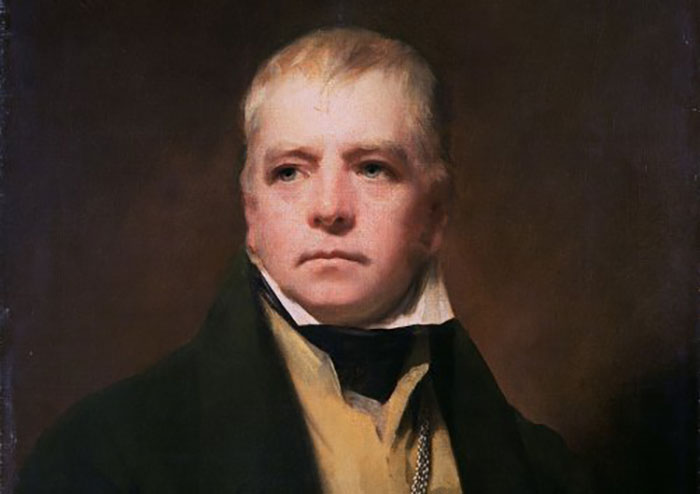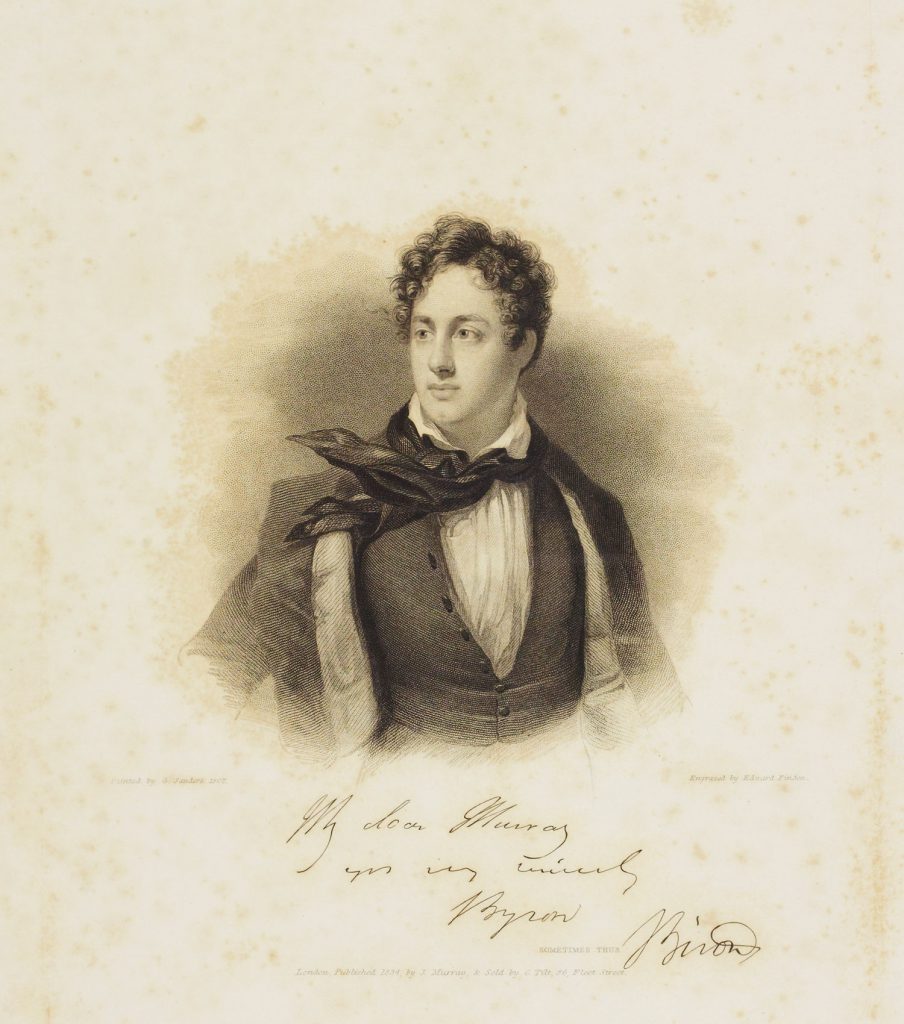Sir Walter Scott was an early admirer of Lord Byron’s poetry, despite finding himself one of several contemporary poets under satirical attack in the latter’s English Bards and Scotch Reviewers (1809):
Next view in state, proud prancing on his roan,
The golden-crested haughty Marmion…
And think’st thou, Scott! by vain conceit perchance,
On public taste to foist thy stale romance…
The arena of literary reviews could certainly be bruising, and Scott confessed to another victim of Byron’s sharp wit, the Lakes poet Robert Southey, that:
“it is funny enough to see a whelp of a young Lord Byron abusing me, of whose circumstances he knows nothing, for endeavouring to scratch out a living with my pen.”

Referring to Byron later in the same letter as a “noble imp” and to himself as the old lion, in order to try and downplay any discomfort he was feeling, it is clear that although Scott was well acquainted with the mischievous world of peer-reviews, he felt the sting in the tail of Byron’s critique particularly keenly. Unlike his illustrious counterpart he was not “born to a park,” and in many ways the assault hit a raw nerve.

Despite their contrary politics and social backgrounds, Scott and Byron did admire each other and found themselves connected through their mutual London publisher, John Murray. This provided an opportunity for forwarding on correspondence.
In 1812, Scott used the publication of the first cantos of Byron’s great epic poem Childe Harold’s Pilgrimage to write and express his admiration, and also to ‘thank’ his junior – with his tongue firmly in his cheek – for the attention shown to his own compositions three years earlier.
This bold move resulted in a flurry of enthusiastic letters in which, amongst many other things, it was revealed that the Prince Regent first confessed his love of Scott’s poetry to Byron. Hearing this news was a big moment for Scott, and visitors to Wild and Majestic: Romantic Visions of Scotland will appreciate that this was an association that would go on to pay dividends for his fame and reputation. In one of these early letters, Scott also told Byron of his recent purchase of the property that he would rechristen Abbotsford and invited him to come and stay with him on the banks of the Tweed.
This invitation did not bear fruit; however, the two writers did eventually meet in person on 7 April 1815, at Murray’s Albemarle Street premises in London. Over the following two months and across a number of society events and dinners in the capital, a firm friendship was cemented and gifts were exchanged. For Byron, Scott chose a Turkish gold and jewelled dagger that had belonged to the Mameluke Chief, Elfi Bey. This dagger has, sadly, never been traced.
Byron’s gift to Scott was a magnificent silver urn containing ashes from the ancient sepulchres of Athens, discovered in February 1811.

Scott was delighted and set about commissioning an additional inscription on the base of the urn to commemorate the presentation. If you’re shuddering at the macabre flavour of these gifts, the thought did not pass the two men by, as Scott reminisced:
“We had a good deal of laughing, I remember, on what the public might be supposed to think, or say, concerning the gloomy and ominous nature of our mutual gifts.”
By the time that Scott favourably reviewed Cantos III and IV of Childe Harold’s Pilgrimage in 1816 and 1817, Byron had already fled the shores of England, leaving a storm of personal scandal and spiralling debts in his wake. On discovering that Scott had written so favourably about the newest instalments of his work, Byron praised such gallantry at a time when he was a serious political and societal hot potato.
On Byron’s death in 1824, aged just 36, Scott mourned the loss of a true great, acquiring one of only a handful of mourning rings commissioned especially for the poet’s closest friends. This ring is carefully preserved in his cabinet of curiosities in the Abbotsford Library and available for visitors to enjoy.
“I have been terribly distressed at poor Byron’s death. In talents he was unequalled and his faults were those rather of a bizarre temper arising from an eager and irritable nervous habit than any depravity of disposition. He was devoid of selfishness which I take to be the basest ingredient in the human composition. He was generous humane and noble-minded, when passion did not blind him.”
The silver urn presented to Sir Walter Scott by Lord Byron now belongs to the Faculty of Advocates Abbotsford Collection Trust, and you can see the piece featured in Wild and Majestic: Romantic Visions of Scotland until 10 November 2019.
You can find out more about Walter Scott and Abbotsford at www.scottsabbotsford.com.
